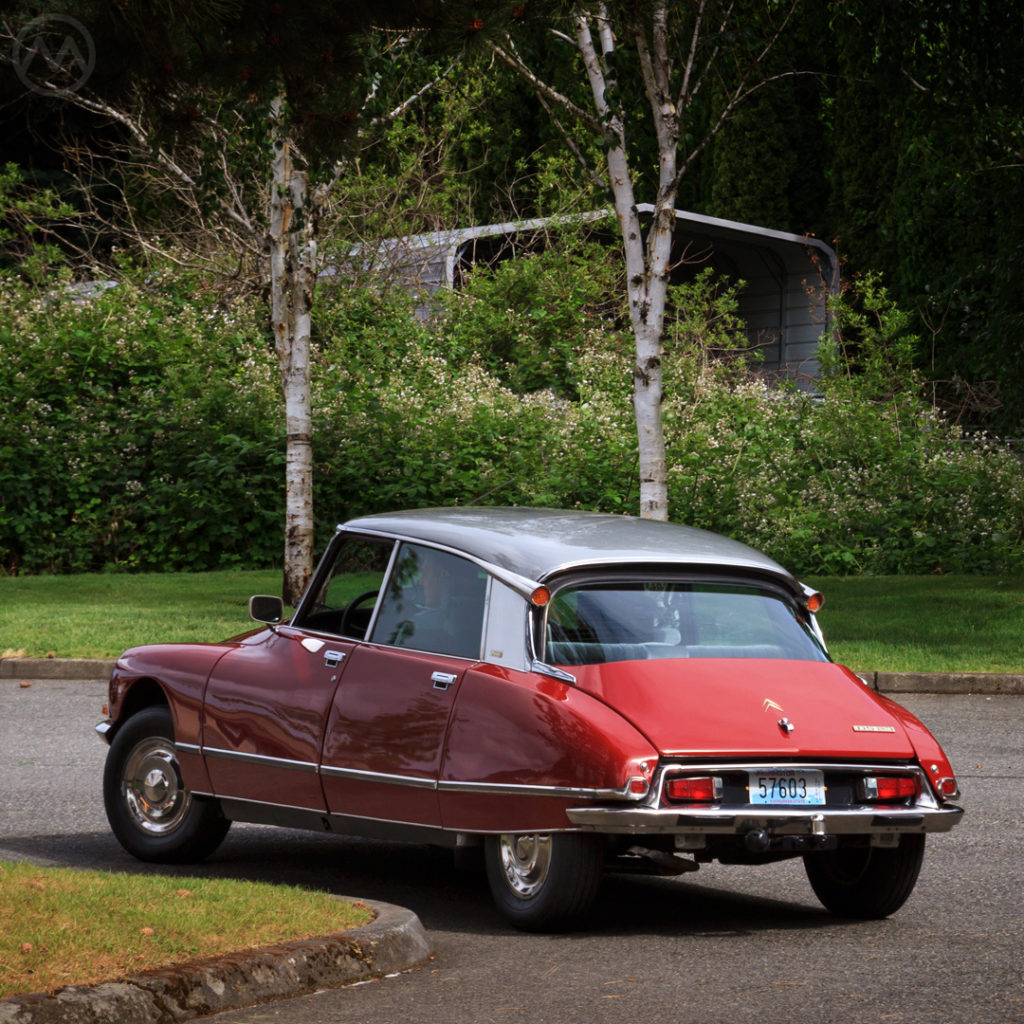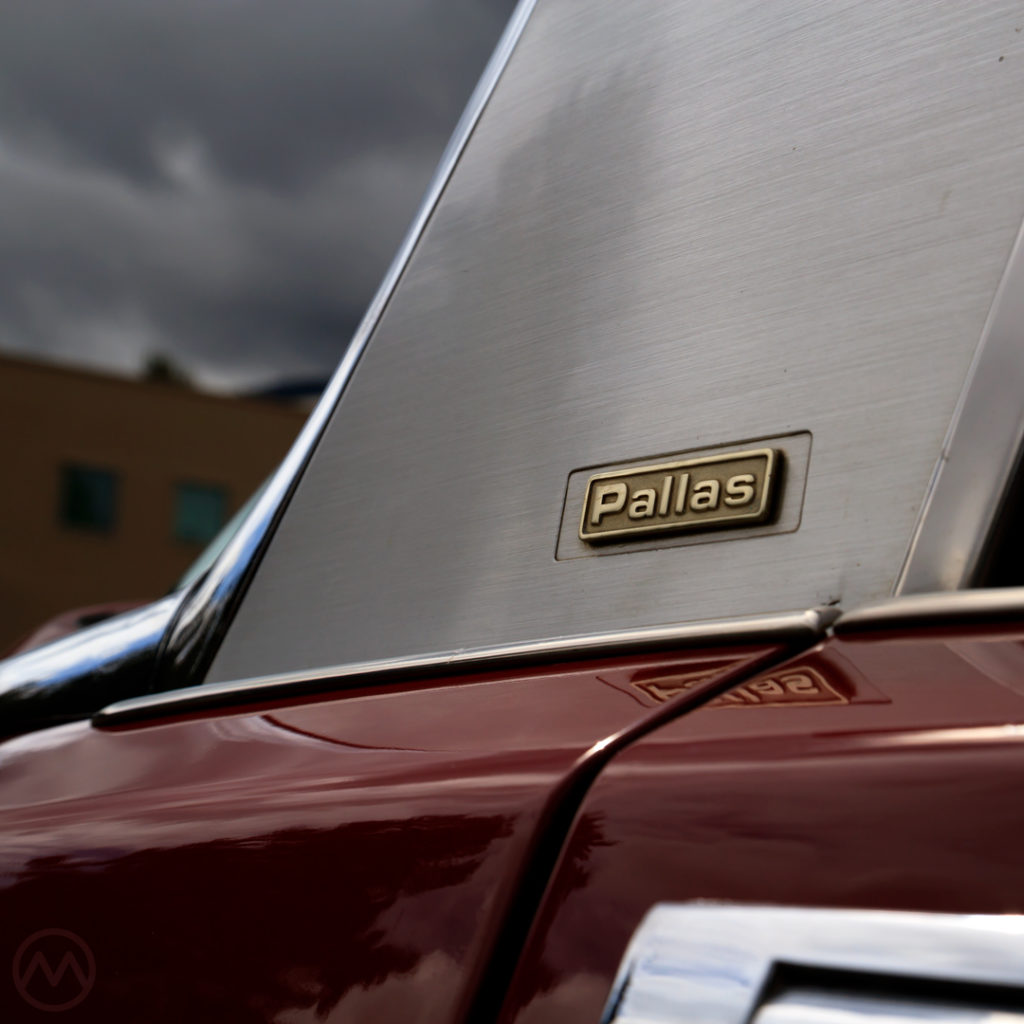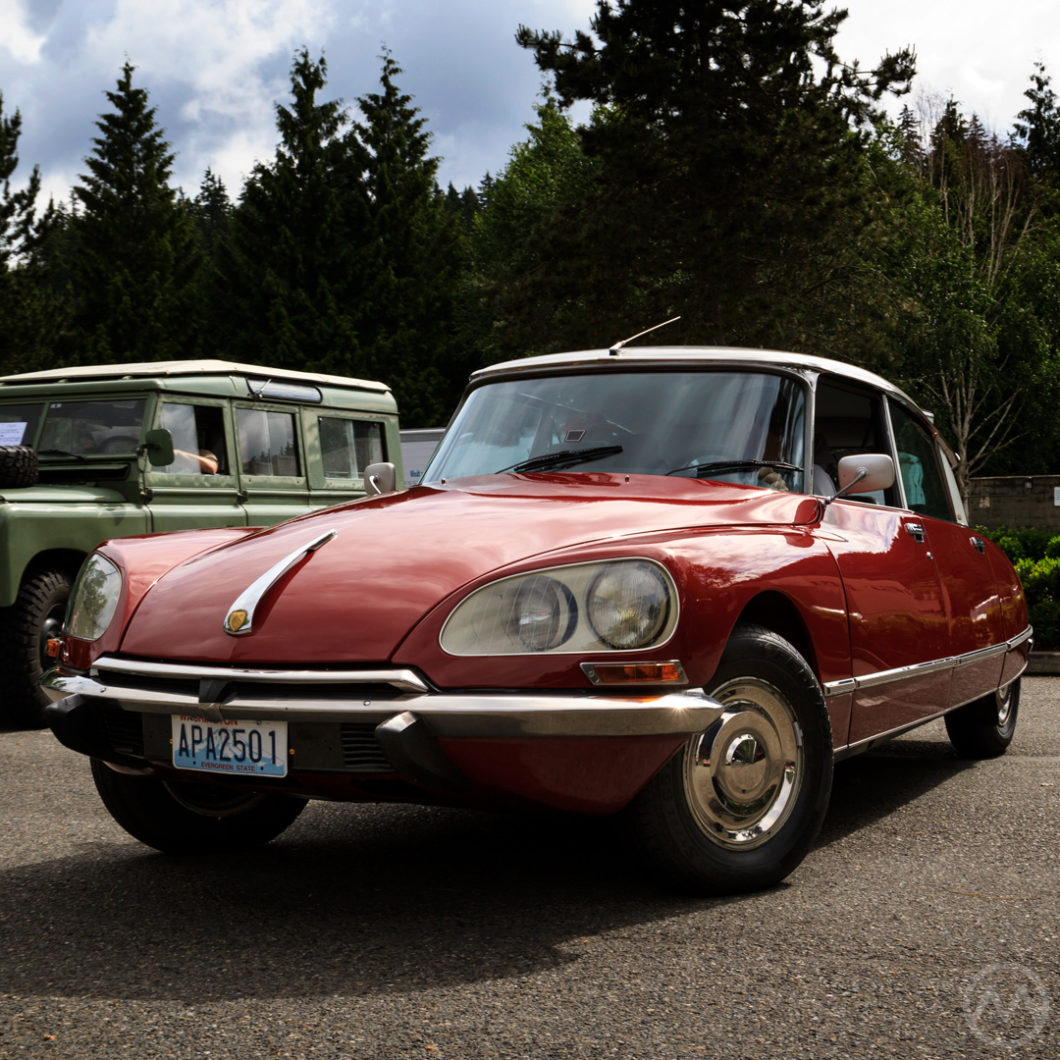It’s been said many times, but it bears repeating – the Citroën DS was probably the most ambitious production car project of all time. The DS23 Pallas, seen here, was the ultimate version of it – both the last production model introduced and the most powerful. It was a fitting sendoff – combining extra levels of luxury with real power – but it took a long time to get there.
The basic DS was a technical tour de force of innovations – the hydraulic suspension designed by Paul Magès was the most obvious, but there were also its other hydraulic systems (some of which were eschewed on the cheaper ID); its moncoque design with bolt-on panels; its inboard front discs; its streamlined undertray; its extensive use of plastic components (including the roof panel); and many more.
It stood apart from virtually all other cars like a UFO when it was new in 1955, and it was still a UFO when production ended 20 years later. Not for nothing did Roland Barthes say, in 1957, “It is obvious that the new Citroën has fallen from the sky inasmuch as it appears at first sight as a superlative object .. We must not forget that an object is the best messenger of a world above that of nature.”
One thing it lacked for most of its life, however, was speed. The character of the DS/ID was never about straight-line performance, and it was a good rally car – but it was generally slow in street clothes.
Originally, the car was to have been powered by an air-cooled flat six patterned on the architecture of the 2CV’s flat twin. Like the 2CV twin, the new engine was also designed by Walter Becchia. Unlike the 2CV, it didn’t really work for its intended purpose. The flat six was heavy, pricey, and not powerful enough. With so many other technical firsts and time running out on the project, managing director Pierre Bercot decided to stick with the old Traction engines.
That meant that the DS/ID would never be road rockets, but late in the car’s life, power did finally arrive thanks to fuel injection.
Locked In
Becchia’s flat six was meant to be mounted ahead of the front axle, but the DS’ hood was too low for that to happen with the old engine. Attempts were made to put the gearbox into the sump to put the engine on top of the axle, but that proved too expensive and time consuming.
Consequently, the drivetrain, very similar in layout to the Traction, was mounted so far back that it was part way under the cowl and sandwiched between structural elements of the chassis. That was actually good from a weight distribution perspective, but it limited what could be done in the engine bay later.
The original DS made do with the three-main bearing, 1,911-cc traction four (the bigger Traction 15CV six was too large to fit). The motor was lightly reworked by engineer Maurice Sainturat, an ex-Hotchkiss man who was the original designer of the traction engine. A redesigned head coaxed it to 75hp, almost what the old Traction six had returned. No rocket, but not so bad for a 2,500-lb. car in the 1950s.
From then on, the story of the DS was one of continual improvement. The more conventional, de-contented ID arrived in 1957, the estate/Break in 1958, 12V electrics in 1960, aerodynamic updates in 1962, etc. Even the engines got slightly more powerful, but it was ten years before any major change happened under the hood.
There were private attempts, however, to make the car faster. In the U.K., Connaught Cars of Send, near Woking, made a tuner version of the ID called the Connaught GT. This car lacked many of the hydraulic pieces of the DS, but also weighed less and enjoyed more direct control. The company was more famous for its 1950s grand prix cars, but converted about 200 U.K.-built IDs with higher compression heads, twin carbs, lighter flywheels, and other modifications.
They were good cars, and even caused Citroën’s Slough factory to build a similar hybrid of DS and ID components called the DW, but production at Slough ended in 1965. Too bad, because big changes were right around the corner.
Sixties Flowering
The DS was a decade old in 1965, but it was still far out compared to most of its competitors. The closest rival, conceptually, was probably Rover’s advanced P6, development of which was heavily influenced by the DS. There still weren’t any cars quite like it, but there were faster and newer cars – so that year the DS/ID got a pair of reworked engines.
These were a new five-bearing 1,985-cc four and a larger 2,175-cc version. The DS19 and ID19 names stayed the same at first but later became the DS20/ID20, while the larger version was the DS21 (later, it was also offered in the ID21 Break, but not the sedan). In contrast to the old engine, a long-stroke torque surfer, these engines were just slightly oversquare and more eager to rev. They also put down considerably more power – 91hp and 109hp at first.
1965 also saw the debut of a dedicated luxury version – the Pallas, named for greek goddess Pallas Athena, the DS itself being play on the French word for Goddess – Déesse. The Pallas had nicer interior fittings and seats – though even the base model IDs were as comfy as a Cadillac, just more spartan.

They were still not fast cars, but more than capable of keeping pace with other 60s Euro family sedans. A major update to the car, however, was just around the corner. In 1967, the Robert Opron-penned “shark nose” front clip replaced Flaminio Bertoni’s original 1955 look (by then somewhat updated), complete with faired-in headlights that reduced the car’s drag even further and came with turning driving lights.
Those lights were not offered in North America thanks to DOT regulations – instead U.S. cars were fitted with low-tech sealed beams. Jaguar also had to ditch the covered lights on the E-type for the same reason. Decades later, Lexus would tout its turning lights to U.S. buyers, but Citroënistes knew better.
The hydraulic system also got an overhaul. It would now use the Liquide Hydraulique Minéral hydraulic fluid instead of the earlier hygroscopic type. This was not like switching from DOT3 to DOT4 brake fluid – the system required entirely new seals and, to keep anybody from confusing the two, Citroën added a green dye to the fluid, better known as LHM.
U.S. regulations also interfered with the transition from the old “red fluid” cars to the new LHM ones, with the new fluid not being approved for road use until mid-1969.
By then the car was almost fully evolved and more popular than ever. The ID name was displaced by D Spécial and D Super (now available with the larger engine) in 1970, but that year was the peak sales year for the model as a whole – 15 years after its initial introduction. 103,000 of the cars were sold that year globally.
Twilight of the Goddess: DS23
In 1969, Bosch Electronic Fuel injection came to the DS21 – as an optional extra – along with a 20% bump in power. It was the first French car with electronic fuel injection, though Peugeot were already using Kugelfischer Mechanical injection. At the time, the 125-horse DS21IE (actual output seemed to vary by market) was the fastest car the French automaker had ever produced and the only DS in which you could chirp the front tires if you floored it.
It was still not a supremely fast car, but the best was yet to come. For 1973, a slightly bored-out 2,347-cc four was added (now called DS23) – with 124hp in carbureted form and 140hp with the fuel injection.
Again, some sources cite slightly lower numbers across the board depending on how they were rated, but the DS23 was unquestionably the fastest stock DS – 0-60 in about ten seconds.
The top of the line, of course, was the injected DS23 Pallas, with higher equipment levels than the lesser Ds and subtle “Pallas” badging. The chrome hood spear seen on this example is a later accessory add-on. The Pallas had a narrow niche – fancier than a Triumph 2.5PI or an NSU Ro80 but not as fancy as a six-cylinder Mercedes W115.
The DS23 was a good swan song, but by the time it arrived, the company was in trouble – having overextended itself on developing the GS and SM and the Rotary GS Birotor.
DS sales remained strong into 1973, but all large Euro cars suffered quite a bit after OPEC, sales plunged from around 96,000 in ‘73 to just 40,000 in 1974 – many of which sat around unsold for months. At the time the CX, after a prolonged gestation, was waiting in the wings – but it wasn’t clear if Citroën would be able to launch the car thanks to its financial difficulties.

It was Citroën’s practice to keep it’s old model going when a new one debuted – and the DS continued alongside the CX for awhile just as the Traction had continued alongside the DS – but this time, very few people were still buying the older car.
They could get discounts on aging inventory if they wanted, or buy a new CX, which arrived in the fall of 1974 – just a month before Peugeot took control of Citroën, who might otherwise have gone out of business.
That was in December of 1974 and only a few hundred people a month were buying new DS’s by then. At the end of March, 1975, just 715 had been built. The end came on April 15, 1975 – a blue DS23 Pallas was the last one down the line, number 1,330,775. Just 847 Ds were made that year.
This particular DS23 is one of those rare 1975 models, owned by Greg Long of Found Motorcars.
The DS23 came much too late for America – Citroën’s ongoing tussles with the DOT and NHTSA and the tiny sales volumes in the U.S. market caused the automaker to stop selling the DS in America at the end of 1972. The upmarket SM remained into 1973, with leftovers still on sale in 1974. You can find out more about how Citroëns were sold in the USA (and more specifically the Pacific Northwest, at SeattleCitroen.net.
This car was a later import, one of many Euro-spec Ds that American enthusiasts later brought over, preferring their features to American ones and given the limited supply of American-spec cars sold new here.


My carbureted 23 gets along very nicely in the modern traffic. In fact I often end up waiting for a good spot to pass on country roads, even behind men driving ‘fancy’ wannabe sports cars. The body roll takes some getting used to, but the wheels never break contact with the tarmac. Combine that with the comfort and ‘feel’ for the road and it is the perfect distance car for me.